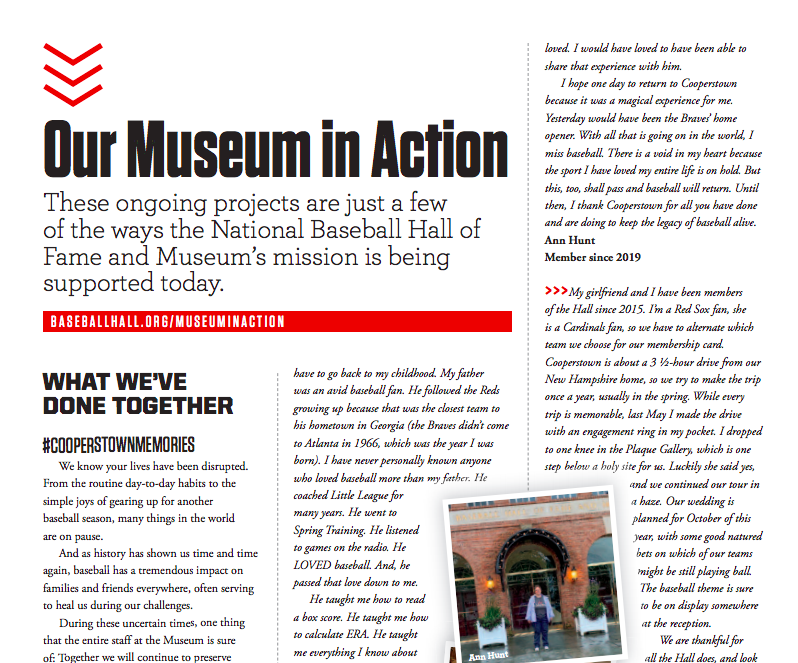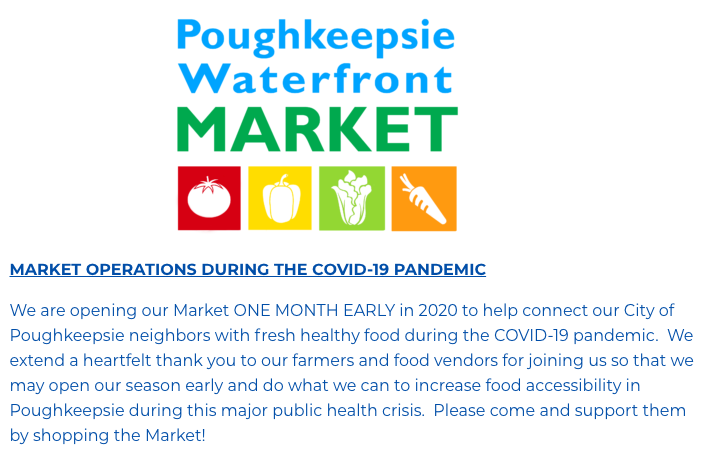Museums across New York State closed their doors to the public more than a month ago. Since then, many museums have adjusted their public engagement strategies, fundraising campaigns, and how they understand their unique roles in their communities. We reached out to three of our MANY Board Members about new strategies for their museums during the COVID-19 pandemic.
The Rockwell Museum
“When we made the decision to close The Rockwell Museum in advance of the directive from the State, the first thing I wondered was how we would continue to be a museum and move our work forward?” said Brian Lee Whisenhunt, Executive Director. “Quickly followed by - how do I empower the team to do what they need to do in the face of what is happening in our community? So I went back to our root, our mission, and reworked it to be what I would consider our ‘war time’ mission: Through compelling online engagement and imaginative use of its collection and resources, The Rockwell Museum provokes curiosity and reflection about art and the American experience. Even while closed.”

Screenshot of rockwellmuseum.org where the museum lets visitors know where they can find and engage with the museum’s educational resources and collections digitally.
The Rockwell Museum team looked at what makes their institution unique and focused on their strengths. The Museum launched its online collection last year and was able to shift already scheduled Spring programming to an online format. “We were able to move one of our lectures from the Smithsonian National Museum of American History to an online presentation, continue our Art Explorer Story House in an online format and even present a student exhibition virtually,” said Whisenhunt. The Museum has reinforced its continued dedication to fulfilling their mission digitally across their website. Under “KIDS ROCKWELL” there is a dedicated “Museum From Home” page that features easy, at home art projects, activities sheets, art inspired writing challenges, digital art hunts, and more. “Our education department converted activities planning for the KIDS ROCKWELL Art Lab to an at-home format parents and kids can do together; crafted digital art hunts that are fun, but still engage the mind with active looking; and also created at-home activity sheets as supplemental materials to curriculum,” said Whisenhunt.

Across The Rockwell Museum’s website, text reinforces the museum’s mission and its dedication to continue it digitally.
The Museum’s education team continued to work with their teaching artists to reimagine “The Great Circle,” a unique Artists-in-Residence collaboration between The Rockwell and the Elmira City and Bath Central School Districts to go virtual which will allow this program to go to children beyond the original participating school districts.
“The Rockwell Museum has a talented and creative team and it felt like the directive of the ‘war-time’ mission emboldened everyone to manifest that same creativity and energy, but through a new challenge and in a different manner,” Whisenhunt said. “I believe it has been helpful to all of us in this situation to know we are still doing the work we set out to and continue to support the educational and artistic needs of our community. Even while closed.”
The National Baseball Hall of Fame and Museum
The National Baseball Hall of Fame and Museum sees over quarter of a million visitors every year. Since the museum closed its doors, it launched a “Safe at Home” strategy that promotes its digital collection, virtual programming, and online exhibits. The Museum’s development and fundraising strategy also shifted. Focusing on engaging members and donors, the development team created the #CooperstownMemories initiative. This initiative asks members and donors to help continue to preserve baseball's greatest stories while sharing their own baseball memories.

Utilizing the “Memories & Dreams” magazine, the Museum is sharing memories from their visitors and members. This #CooperstownMemories initiative has been added to their regular “Our Museum in Action” feature in which promotes donations for specific conservation and digitization projects.
“The response has been outstanding,” said Ken Meifert, VP of Sponsorship and Development. “...the stories continue to flow in. We are in the process of building a new website page to feature more stories, we will be sending another email sharing some [of the stories] and asking for more and promoting via our social media channels.” Meifert responds to each email that comes in. “Literally hundreds of them. I think this is critically important, as it creates a real connection to our supporters with authentic two-way communication.”
#CooperstownMemories states that “together we will continue to preserve the game’s greatest stories—and our own baseball memories.” While the Museum’s physical doors are closed, this campaign emphasizes togetherness during this pandemic. It encourages a shared ownership over the collection through this shared memories project. “As baseball fans we all have stories,” Meifert wrote in his email to members asking them to share their Cooperstown memories. “...our first trip to Cooperstown, meeting a Hall of Famer during Hall of Fame Weekend, seeing an exhibit that brings our memories flooding back, stepping into the plaque Gallery and feeling the connection to the game’s all-time greats—the memories are countless.”
Mid-Hudson Children’s Museum
When schools in and around Poughkeepsie closed in mid-March, the Mid-Hudson Children’s Museum was losing most of its earned revenue. “The immediate concern was knowing that we are a small museum and don’t have a large cash reserve,” said Lara Litchfield-Kimber, Executive Director. “I had to focus on one of our guiding principles during that early phase: how do I preserve our cash and how do I take care of my team?” Before any federal aid was announced she decided to do an emergency fundraising campaign. By Friday, March 13, that campaign was sent to the top twenty five donors to the Museum. “I realized that I could tell the story to these donors about the reality of how much money we last just last night and that we are fighting for survival,” Litchfield-Kimber said. Utilizing the sense of urgency created by the museum’s closure, the messaging was transparent. “I shared the details, not what I would lead with publically at that time but it’s kind of like bringing your insiders close and keeping them close.” The Museum received $7,000 in donations within that first week. Once the Emergency PAUSE order went out and other businesses and nonprofits began to close, fundraising stopped and Litchfield-Kimber applied for SBA, PPP, and other relief funds. The pandemic also forced the museum to step back and assess its role in the community during this uncertain time.
“Every museum has something that makes them necessary for their community,” said Litchfield-Kimber. “Right now we’re thinking where can we [the museum] be necessary...one of the things I can do is share the work of our partner organizations.” On their social media channels, the Mid-Hudson Children’s Museum has shared educational resources from other children’s museums from across the country like the Chicago Children’s Museum and their Parenting Playbook. “The narrative of us being in this together is important and it’s not too doom and gloom...we are celebrating our partners.”

The Museum also realized that Poughkeepsie Waterfront Market, one of the Museum’s core programs, was an essential business defined by Governor Cuomo’s Executive Order. The Museum opened the Poughkeepsie Waterfront Market in the summer of 2017 to connect residents and families with fresh, affordable and locally-produced food. It was the first children’s museum in the country to open and operate a public farmers market as a strategy for fighting urban food insecurity and advancing community health. “For us, the point wasn’t so much about the Farmer’s Market but the inner city of Poughkeepsie has no grocery store and the public transportation system has been drastically cut. We still have restaurants and school lunches are still provided because we are a 100% funded school lunch district, but access to fresh food is really challenging,” Litchfield-Kimber said. “When we realized that this [Farmer’s Market] was essential and was necessary, we had to do it.”
Litchfield-Kimber reflected that it’s important to take this time to step back in order to think about what makes your museum unique and to ask what role does your museum play in your community. “If you can’t lean into your community, sit to the side and hang tight,” Litchfield-Kimber said. “If the time is for you to hibernate and get your ducks in a row behind the scenes that’s okay because right now we’re all trying to figure this out. Know what your lane is and if you're going to leave it—like us for the market—know that it is a lane that you should be in. Don’t just do it because everyone is doing it. Figure out where your work is essential.”
Further Reading / Resources
Performance vs. Exhibit-Based Experiences: What Will Make People Feel Safe Visiting Again?
Sustainability to Survivability: 5 Nonprofit Finance Must-Do's in the Time of COVID-19
National Coronavirus Response: A Road Map To Reopening
Three New Scenarios for Financial Survival in 2020
Using Scenarios to Plan Your Museum's COVID-19 Response
COVID-19: What Nonprofits Should do Right Now
Arts groups look to Great recession for clues to an unknown coronavirus future
Financial Assistance for Businesses Impacted by COVID-19 (NYC)
How COVID-19 is Impacting Intentions to Visit Cultural Entities
